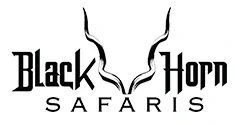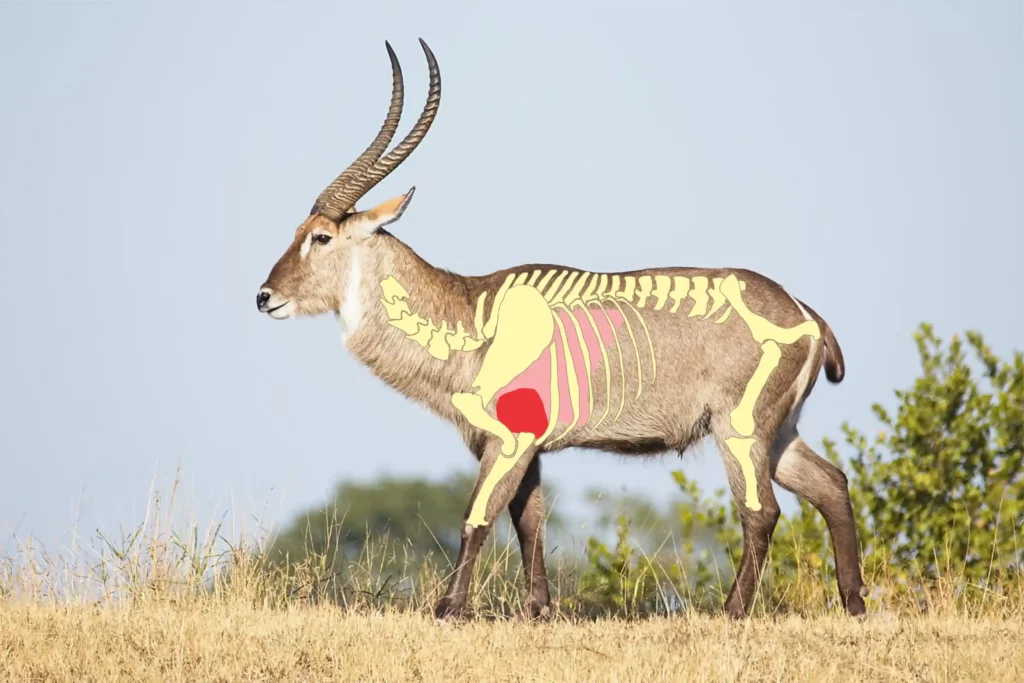
African Plains Game hunting is a centuries-old tradition, blending adventure and conservation. The vast African bushveld and open plains, teeming with different game species, have drawn hunters for centuries. Upholding ethical hunting principles, with fair chase and ethical shot placement is a cornerstone of sustainability.
Overview of African Plains Game Hunting
Big game hunting encompasses tracking and stalking game in natural habitats. The variety of species, like Impala, Kudu, Wildebeest, Warthog and Zebra, presents challenges and experiences demanding skill and respect for the natural resources. Shot placement on African game is a vital skill that determines success or failure, African species are tougher than North American game.
Importance of Ethical Shot Placement
While hunting’s attraction is undeniable, making a good shot makes all the difference. Proper shot placement isn’t just a moral obligation—it is a responsibility shared by Safari goers. A humane kill respects the animals and showcases commitment to conservation and sustainability. Ethical shooting has a wide reaching impact on local ecosystems and the hunting industry as a whole.
This article comprehensively guides accurate and humane shots on Africa’s Game. Educating sportsmen of all levels, it covers anatomical features and techniques. By exploring this crucial knowledge base, the article empowers responsible choices, reflecting our role as stewards of nature and hunting tradition.
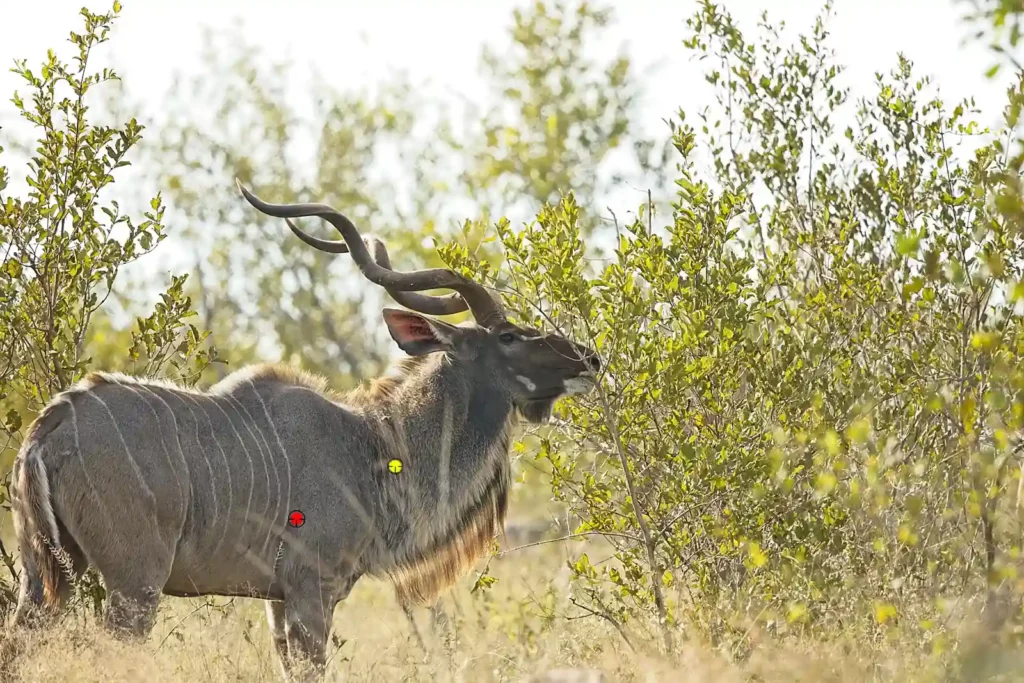
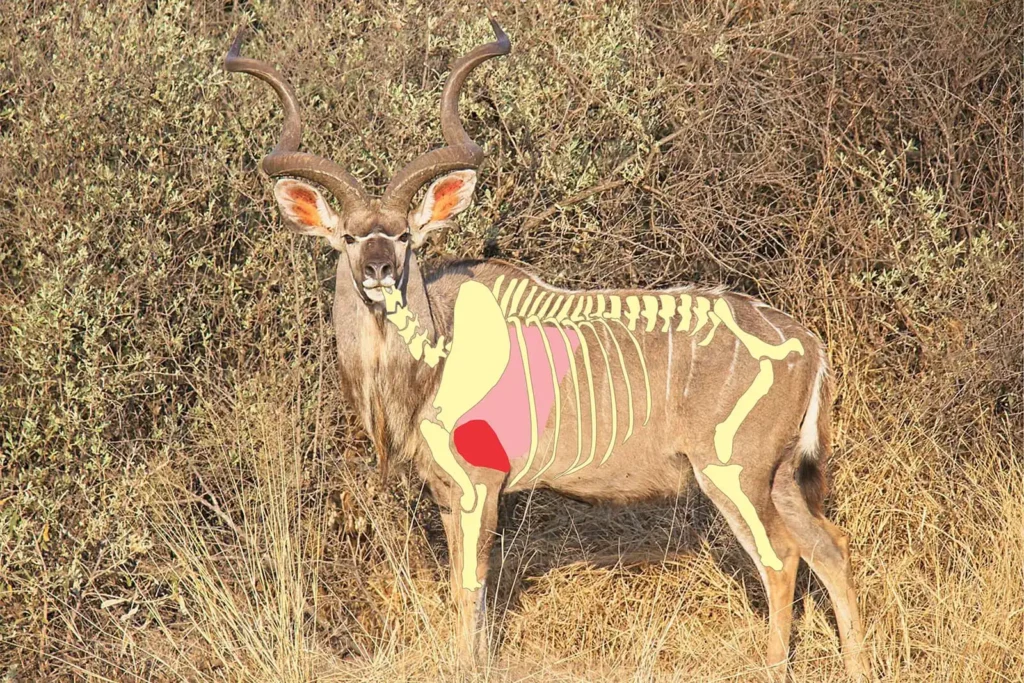
Understanding African Animals Anatomies
An African hunting safari demands an intimate understanding of the anatomy of the various animals. Each animal possesses unique physical features that necessitate precise shooting for a clean and effective kill. We delve into the distinct characteristics of common species and explores the vital organs and skeletal structures crucial for successful and enjoyable hunting. You will find that the vitals on an African animal sit a little further forward than American game or the deer you are used to back home. Take a look at the provided shot placement diagrams.

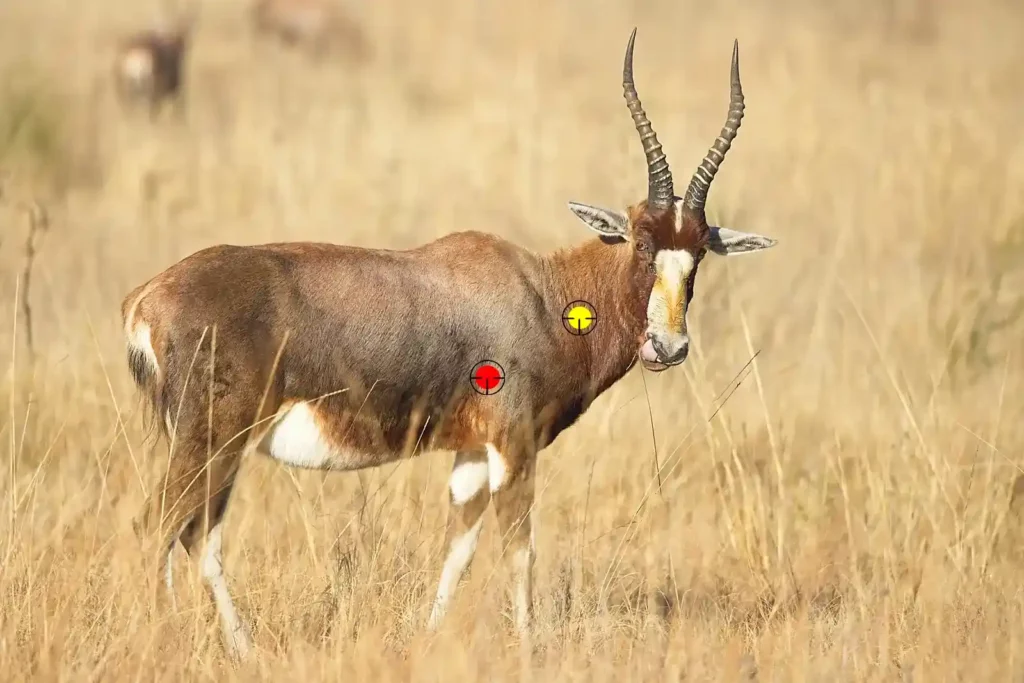
Where shots should be aimed – Vital Organs and Skeletal Structure
Broadside Shot
This is the recommended shot, and should be used for the vast majority of your shots. Among the various shooting angles that may be presented, the broadside animal stands out as one of the most effective, with its potential to provide clean and humane kills. This angle involves aiming for the vital triangle, a zone encompassing the heart and lungs. Hitting this critical area not only ensures a swift and humane demise for the animal but also minimizes the risk of tracking and potential non-recovery. To place your shot perfectly divide the animals body horizontally into thirds, aim for the top of the lower third and tight up against the shoulder.
The heart, positioned low and just behind the shoulder, is a prime target due to its rapid incapacitating effect. Meanwhile, the lungs, extending from the top of the heart to just below the spine, are equally crucial as they cause rapid loss of blood and oxygen. Successful execution of this shot will typically bring the animal down in a matter of seconds with a minimum of suffering and tracking involved.
The Quartering Away Shot
The quartering away shot is the next best choice, but presents a slightly more challenging opportunity when aiming. In this scenario, the animal is angled away from the shooter, offering a unique line to the vital organs. Executing the quartering away shot demands a keen understanding of where to shoot, as the goal is to hit a specific target while ensuring penetration through to the vitals. Precision placement is important, with the optimal point of aim being the opposite off side shoulder. This angle of penetration will ensure that you reach the vital triangle. Successful execution of this shot will put the animal down in a matter of seconds.
A well-placed shot here can penetrate the lungs and potentially sever major blood vessels, resulting in quick incapacitation and reducing the likelihood of a long tracking job. However, the quartering away shot also carries a risk if improperly executed, as it can result in a hit too far back through the liver or stomach, potentially leading to a more challenging recovery. Responsible shooters recognize the importance of patience and restraint when selecting the quartering away shot, listen to your PH.
The Quartering Towards Shot
This is a much more difficult shot and should be used under specific circumstances with large enough caliber bullets. The quartering towards shot is a shooting scenario that demands both precision and strategic decision making from shooters. In this instance, the animal is quartering towards you, presenting a relatively challenging shot. Ethical hunters understand the importance of hitting vital organs to ensure a humane and effective kill. When executing the quartering towards shot, the ideal point of aim is the front shoulder, where the shoulder bone meets the body’s midline.
A well-placed shot in this area can penetrate to the vital triangle, delivering a swift and efficient kill. Misjudging the animal’s position and angle can lead to a hit too far forward or back, potentially striking non-vital areas. Successful execution of the quartering towards shot demands both good marksmanship skill and a deep understanding of the animal’s body and vitals. Make sure you take these shots with enough gun and a projectile that will give adequate penetration.
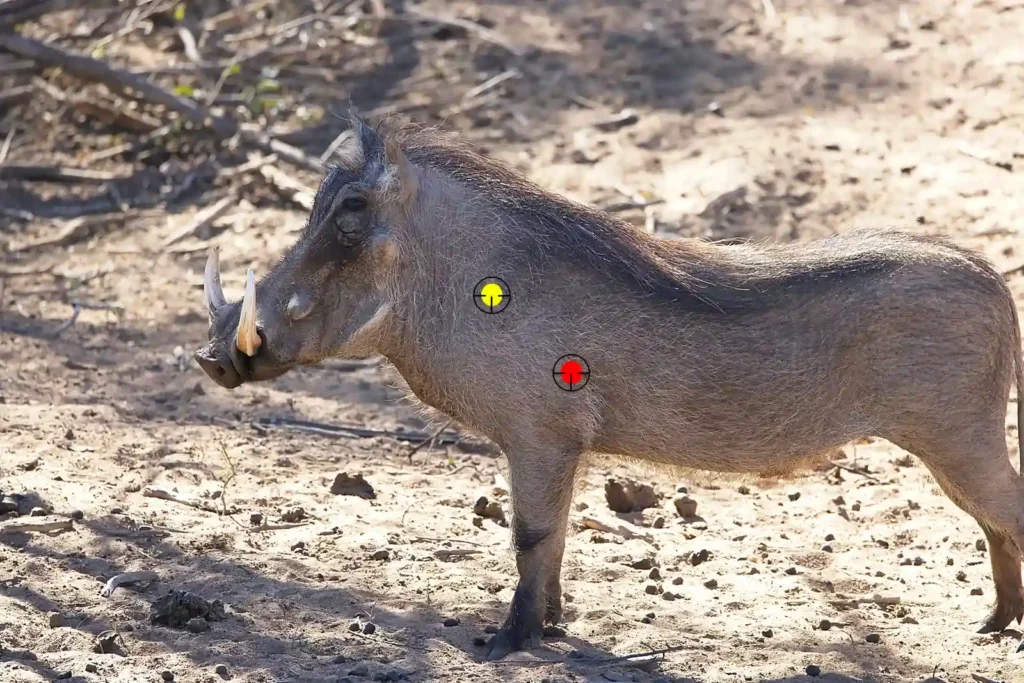
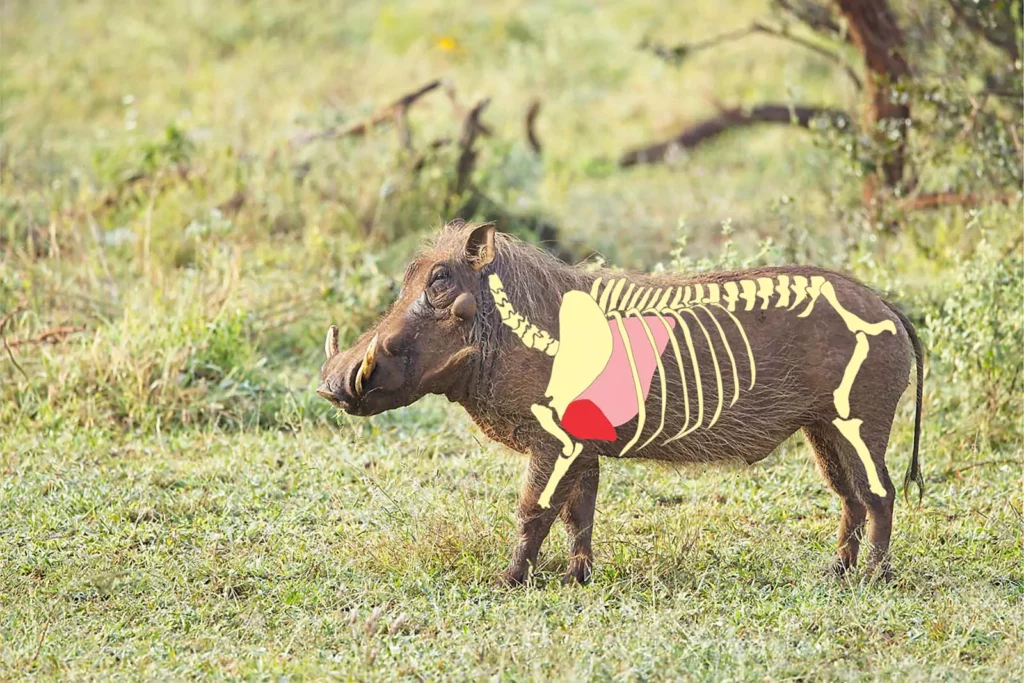
The Full Frontal Shot
The frontal shot is a challenging and nuanced shooting opportunity that demands utmost precision and careful consideration. This particular angle involves the animal facing directly towards the shooter, offering a distinctive set of complexities. The objective is to target the specific area just above the brisket, where the neck meets the body. A well-placed frontal shot can sever major blood vessels, damage vital organs, and ultimately lead to a swift and humane kill. However, the frontal shot also demands exceptional accuracy due to the presence of dense bone structures that can deflect projectiles if not applied correctly. Hunters who opt for the frontal shot must possess a thorough understanding of the animal’s vital organs, coupled with proficient marksmanship skills. By carefully choosing this shot only when the conditions are optimal and executing it flawlessly, hunters ensure a clean and efficient harvest of the game animal.
The Going Away or Texas Heart Shot
This shot is only recommended on a wounded animal as a follow-up shot. The going away, or “Texas heart shot,” is a controversial and highly debated shooting angle that carries significant risks and ethical considerations. In this scenario, the animal is moving away from the shot, presenting a perilous shot opportunity. Advocates of this shot suggest targeting the area just below the tail, targeting the vitals from the rear. Ethical hunters prioritize humane kills and responsible hunting practices, and the going away shot often runs counter to these principles. It is crucial for sportsmen to exercise prudence and choose shots that prioritize quick and humane kills while minimizing undue suffering to the game.
High Neck – Spine and Brain Shot
These shots are challenging since you are aiming at a small target. The high neck-spine shot and brain shot represent advanced shot choices that demand exceptional precision and knowledge of where to shoot. While these shots can bring the animal down instantly, their relatively small target size and potential for failure require careful consideration. The high neck-spine shot involves targeting the uppermost vertebrae below where the neck meets the skull, while the brain shot targets the brain itself. While successfully hitting these areas can lead to rapid kills, the small target presents a significant challenge, particularly under the unpredictable hunting conditions.
A slight miscalculation in hold or animal movement can result in a misplaced shot, leading to non-fatal wounds and undue suffering. Choosing to attempt these shots should be a decision made with caution and respect for ethical hunting practices, as a failure to achieve precise placement can result in unintended consequences for both the hunter and the game.
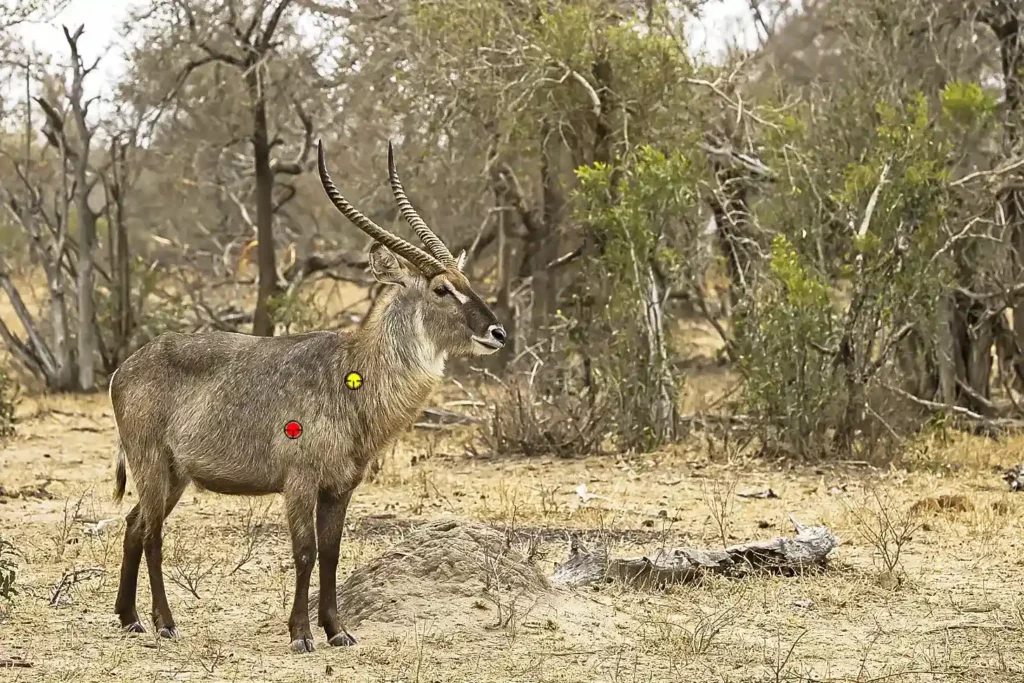
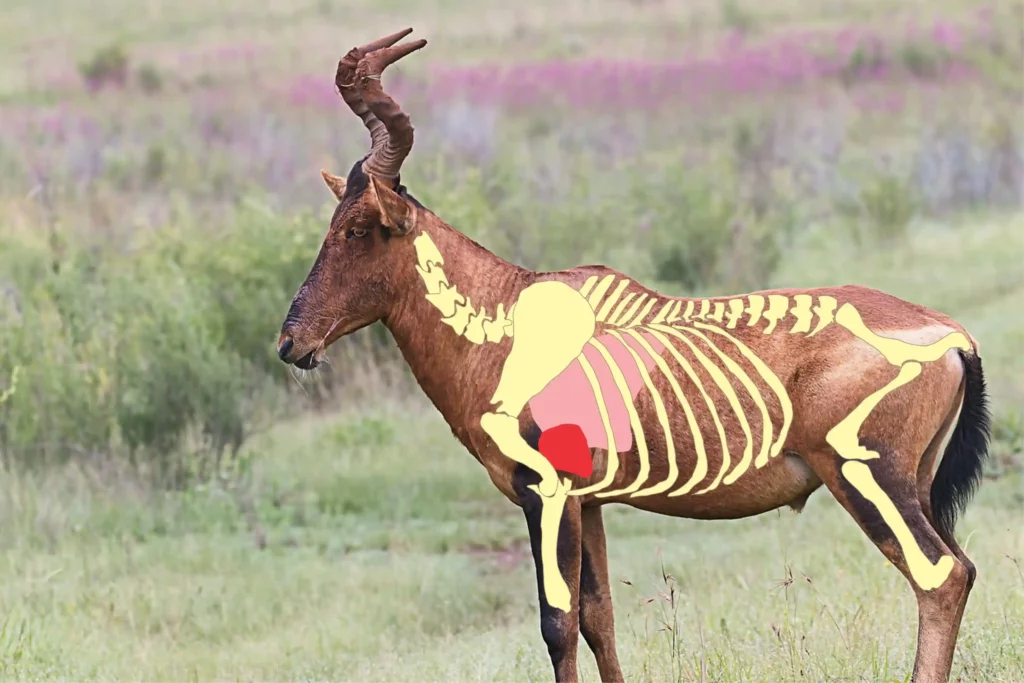
Choosing the Right Firearm and Ammunition for Game in Africa
Selecting the appropriate firearm and ammunition is a fundamental aspect of effective hunting, with key considerations revolving around the balance between bore and game size. The choice of firearm caliber should be carefully matched to the size and type of game being pursued. A well-balanced combination ensures sufficient stopping power while minimizing unnecessary damage to the meat and hide. Be guided by your professional hunter and hunting outfitter.
Equally important is the selection of suitable ammunition designed to deliver consistent and controlled expansion upon impact, maximizing the transfer of energy to the target. Projectile weight, construction, and design are pivotal factors that influence terminal ballistic performance, penetration, and overall effectiveness. Sportsmen must take into account the specific demands of the hunting environment and the chosen trophy animals. In the pursuit of ethical and responsible hunting, the careful interplay between firearm caliber, ammunition, and bullets of the proper construction, underscores a shooter’s commitment to humane and efficient kills while honoring the principles of sustainable hunting practices.
Cartridges Suitable for a Hunting Safari
| Animal Size & Examples | Cartridge Recommendations | Bullet Weight |
|---|---|---|
| Small Game (e.g., Steenbuck, Duiker, Klipspringer) | .243 Win, .270 Win | 85-120 grains |
| Medium Game (e.g., Impala, Blesbuck, Nyala) | .270 Win, 7mm-08 Rem | 130-150 grains |
| Large Game (e.g., Kudu, Wildebeest, Hartebeest) | .30-06 Springfield, .300 Win Mag | 150-180 grains |
| Extra Large Game (e.g., Giraffe, Eland) | .300 Win Mag, .375 H&H Mag | 200-300 grains |
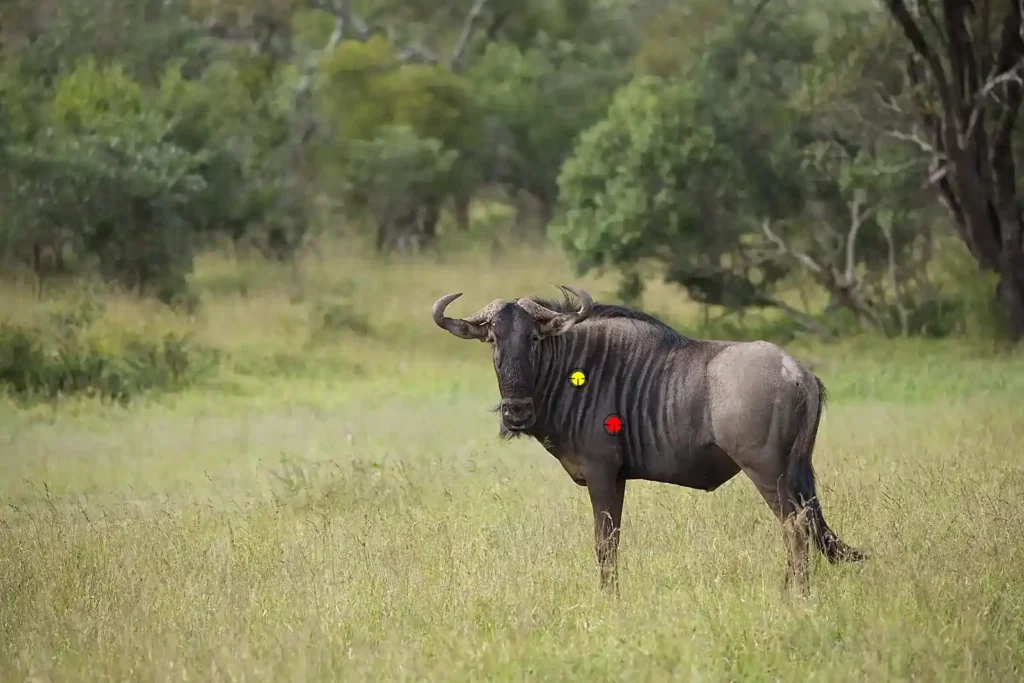
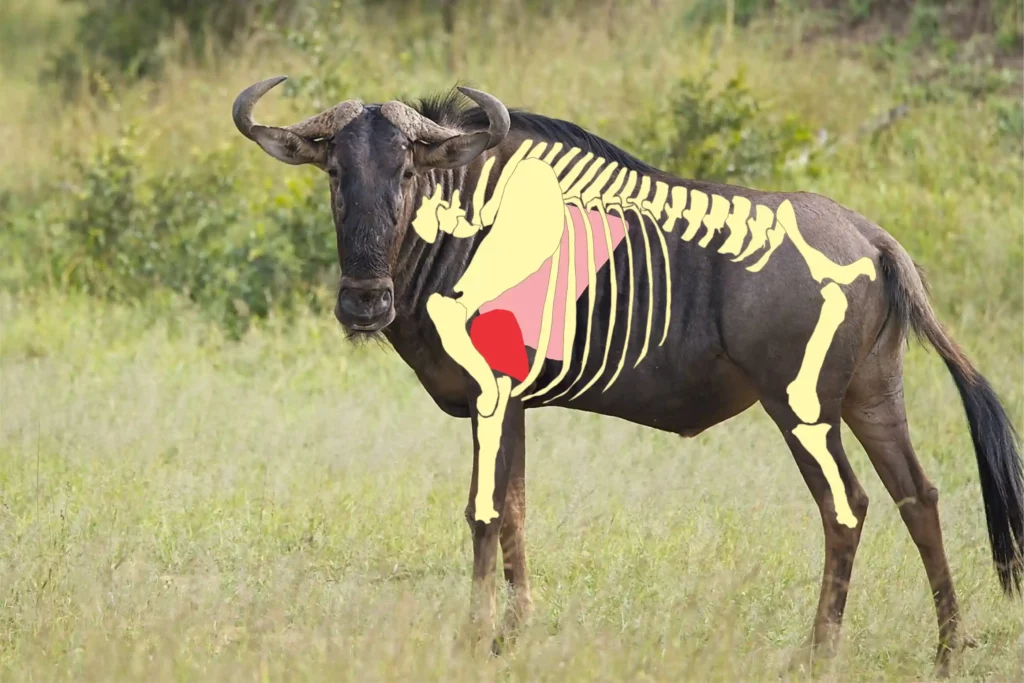
Optics and Scopes for a Hunt in Africa
The significance of clear optics cannot be overstated, as it directly impacts the accuracy and success of the hunt. A high-quality scope provides the necessary clarity and magnification to see intricate details of the target, aiding in precise shot selection. Clear optics allow you to identify anatomical features and subtleties that might otherwise go unnoticed, thereby enabling informed decisions for effective shots. Adjusting for different shooting distances is a crucial skill that relies on the clarity of optics.
Modern scopes often come equipped with reticle systems that allow for quick and accurate adjustments, compensating for drop and ensuring accurate point of impact across varying distances. By utilizing clear optics to their fullest potential, hunters can confidently adapt to changing scenarios, make well-informed decisions, and enhance their ability to make shot placement in the right area while maximizing the potential for clean and humane kills.
Factors Affecting Shooting on Safari
Achieving precise shooting in hunting is influenced by a multitude of factors that demand both skill and adaptability. Distance and shooting positions play a pivotal role, as longer ranges necessitate heightened accuracy and drop compensation. Varying shooting positions, such as prone, kneeling, or standing, impact stability and control, influencing the shooter’s ability to maintain a steady hold. The angle of the animal further complicates the shot, with quartering angles requiring careful consideration of vital zones and potential deflection.
Shooting through bush introduces an added layer of complexity, as vegetation can deflect projectiles, demanding meticulous shot placement to avoid undesirable outcomes. Firearm and ammunition considerations are essential components of a Safari in South Africa. The choice of cartridge, projectile type, and load affects terminal ballistics, penetration, and expansion, requiring hunters to understand their equipment’s limitations and capabilities. An in-depth understanding of these factors allows sportsmen to make split-second decisions and adapt to ever-changing conditions.
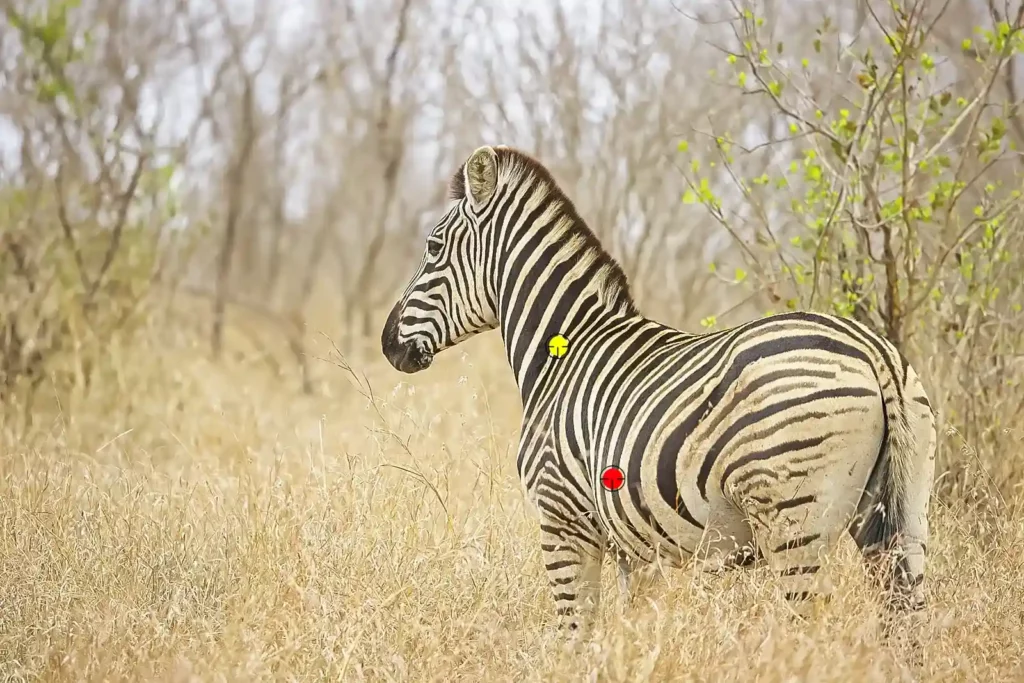
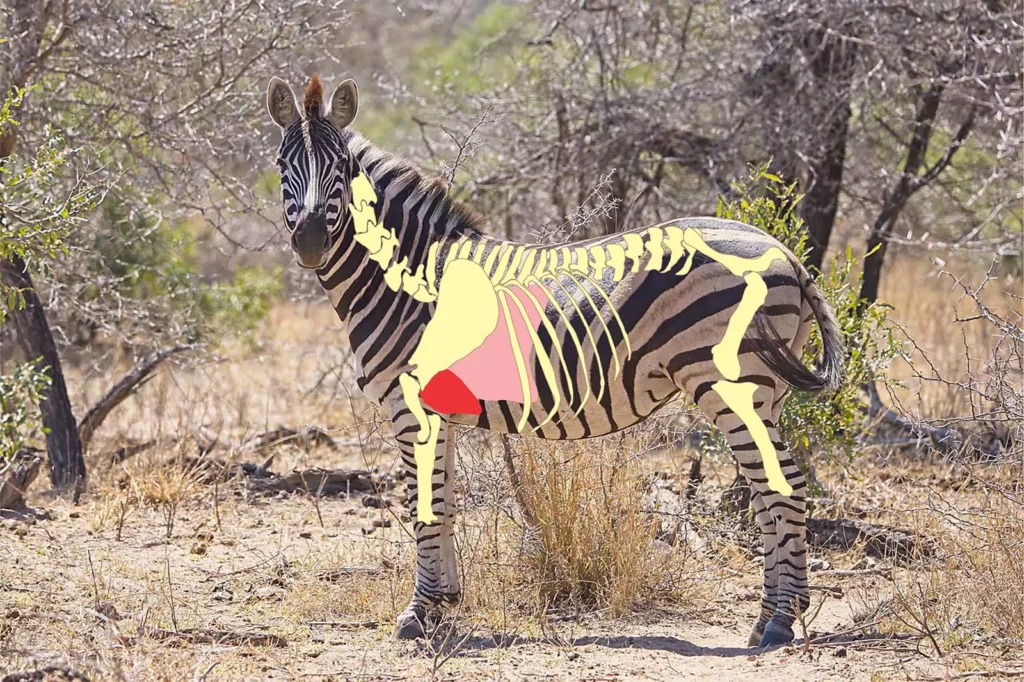
Practice and Preparation for an African Safari
Practice and preparation stand as the cornerstones of successful and ethical hunting, with a firm emphasis on honing shooting skills. The importance of mastering shooting from available natural rests and shooting sticks cannot be overstated. These techniques enhance stability and control, providing the shooter with the ability to capitalize on fleeting opportunities and unpredictable conditions. Engaging in targeted shooting drills and training exercises refines muscle memory, adaptability, and quick decision-making, ensuring that hunters remain proficient in high-pressure situations. Equally crucial is a comprehensive knowledge of firearm ballistics, encompassing trajectory, windage, and drop. This understanding empowers hunters to make precise adjustments and informed judgments based on the specific characteristics of their chosen firearm and ammunition. Dedicate ample time to practice and perfect the various shooting positions including the use of shooting sticks.
Conclusion
Ideal shot placement is not merely a technical skill; it embodies a profound understanding of where to locate the vital organs, a mastery of marksmanship, and a commitment to ethical hunting practices. From the meticulous selection of the shooting angle and the consideration of factors like distance and firearm ballistics to the disciplined practice and preparation that elevate a hunter’s abilities.
Let us embrace these principles as we venture into the African wilderness, fostering a legacy of ethical hunting practices that reflect our love for nature and our commitment to preserving its beauty for generations to come.
References:
- Baker, R. E., & Elton, C. S. (1947). The Study of Shooting Statistics: I. Variation in Wounding Effect with Bullet Type and Calibre. British Journal of Experimental Pathology, 28(1), 1-12.
- Petzal, D. E. (2013). The Total Gun Manual: 335 Essential Shooting Skills. Weldon Owen.
- Capstick, P. H. (1982). Death in the Dark Continent. St. Martin’s Press.
Recommended Reading:
- “The Complete Book of Rifles and Shotguns” by Jack O’Connor
- “The Perfect Shot: Mini Edition for Africa II: A Guide to Rifle Shooting on the African Continent” by Kevin Robertson (a Veterinarian)
- “Understanding Ballistics: Complete Guide to Bullet Selection” by Philip P. Massaro
- “The Science of Game Shooting and Conservation” by C. A. Bates, N. W. Sotherton, and P. R. T. Moore
- “Hunting Ethics and Fair Chase” by Jim Posewitz
Frequently Asked Questions (FAQs)
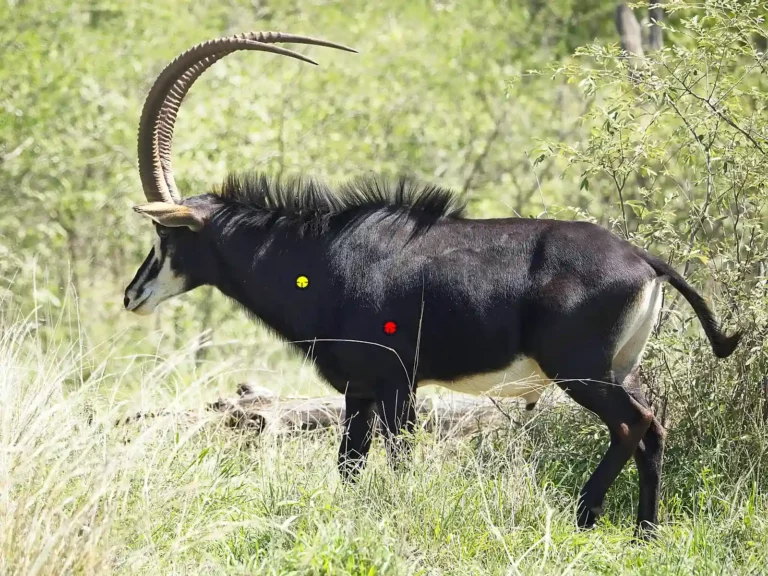
What is the optimal distance for shooting African game?
The optimal shooting distance for African game typically ranges from 100 to 300 yards, depending on factors like the animal in question, firearm, and hunter’s skill level. This range ensures accurate shooting and ethical kills, while personal proficiency and equipment familiarity also contribute to determining the ideal distance.
How can I minimize the risk of a wounded but unrecovered animal?
To minimize the risk of wounding animals without recovery, prioritize regular shooting practice, select appropriate firearms and ammunition, and target vital areas such as heart and lungs. Use shooting rests for stability, ensure clear optics, and exercise patience before taking the shot.
Are there specific vital aiming points for each type of game animal?
Yes, there are generally specific vital aiming points for each type of game animal. While the exact locations may vary slightly depending on the species, the objective remains the same, to target vital areas for quick and humane kills. For example, a broadside shot commonly targets the vital triangle, located just behind the shoulder, ensuring swift incapacitation. However, it’s essential to familiarize yourself with the anatomy of the specific animal you are hunting, as their size, shape, and behavior can influence the optimal aiming points.
What is the most recommended caliber for Africa?
The most commonly recommended cartridges for African game are the .30 cartridges such as .308, 30-06 Springfield and 300 Winchester Magnum. With one of these cartridges and providing you use a controlled expansion projectile of around 180 grains you are able to successfully take most of the common game available on safari.
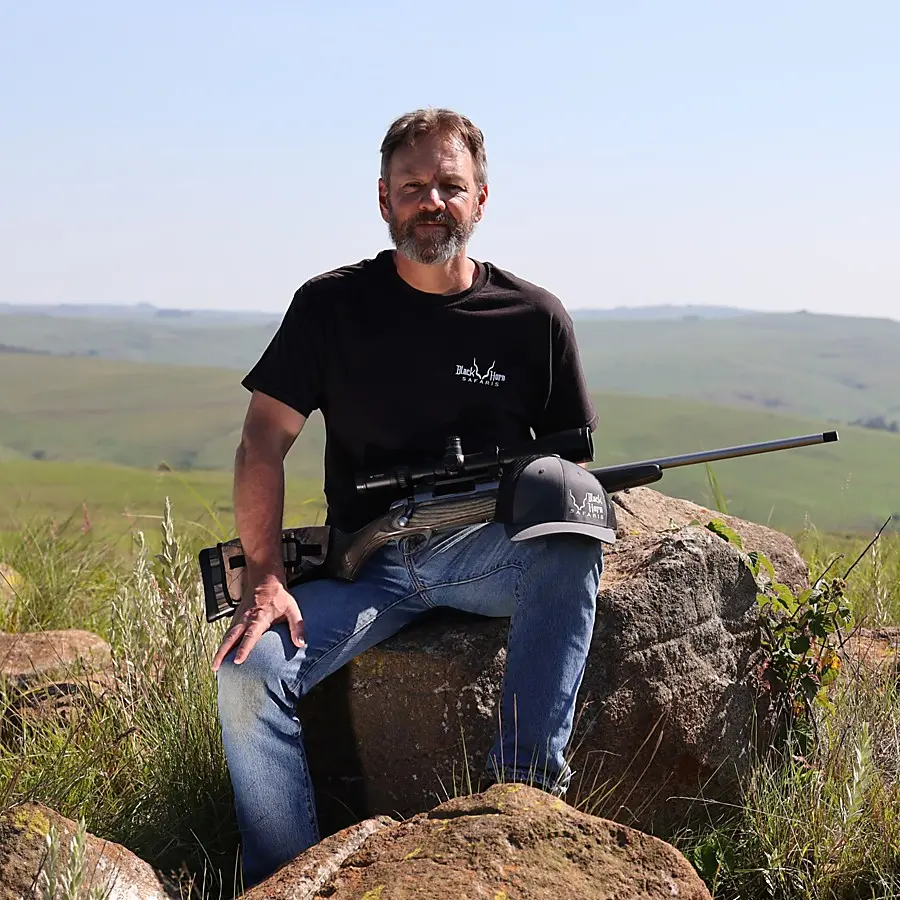
Adrian Anderson first obtained his Professional Hunters license in 1991. He is a Big Five and Dangerous Game licensed Professional Hunter and Hunting Outfitter. He has a tremendous love for wildlife and the African bush and enjoys sharing his knowledge with the hunting clients that he guides. Guiding hunters in Africa’s wild places is a passion and seeing them succeed with their goals brings satisfaction. With knowledge of the Safari industry built up over 32 years he is well qualified to give guidance to his hunting clients.
